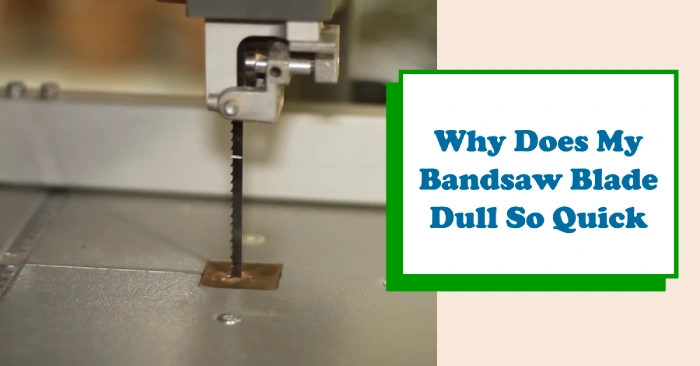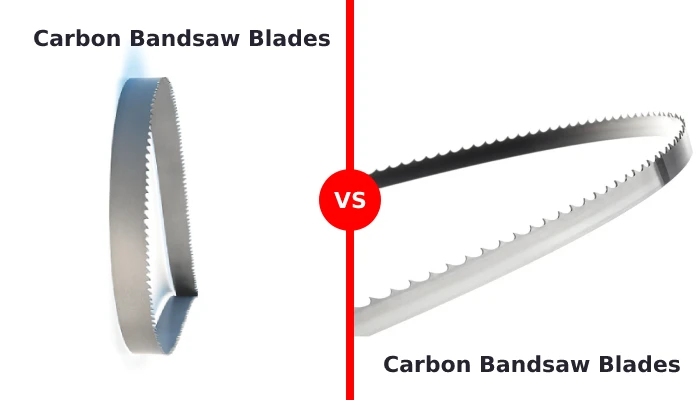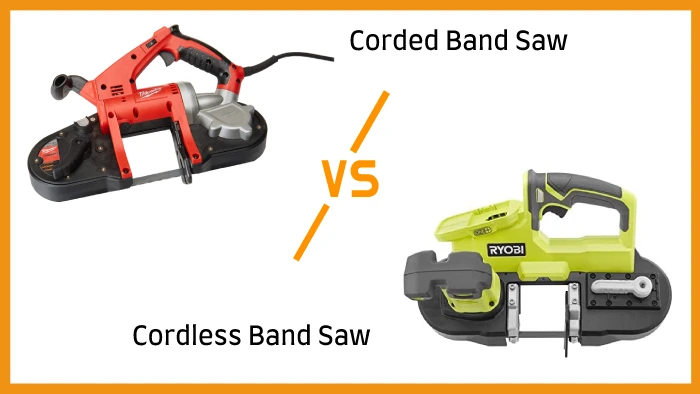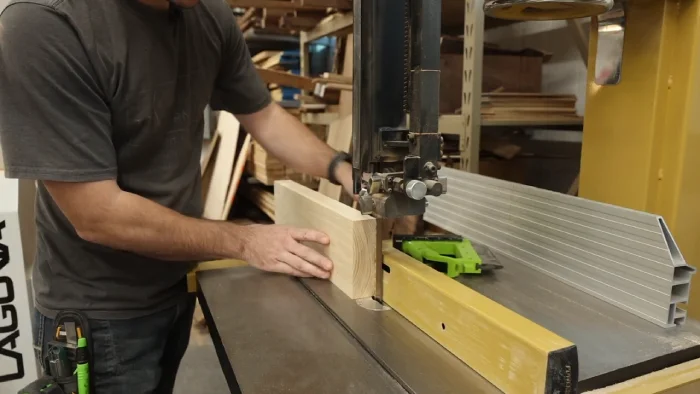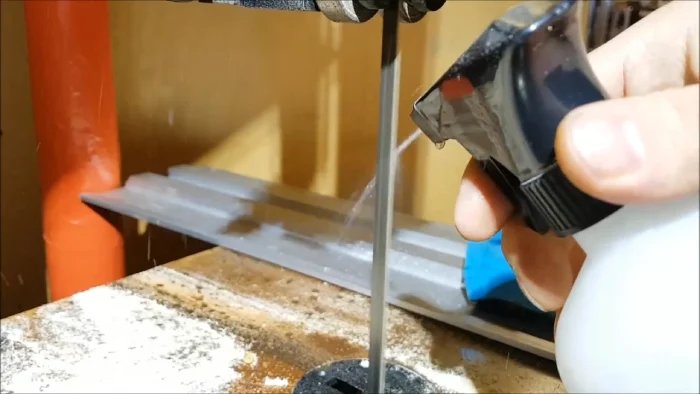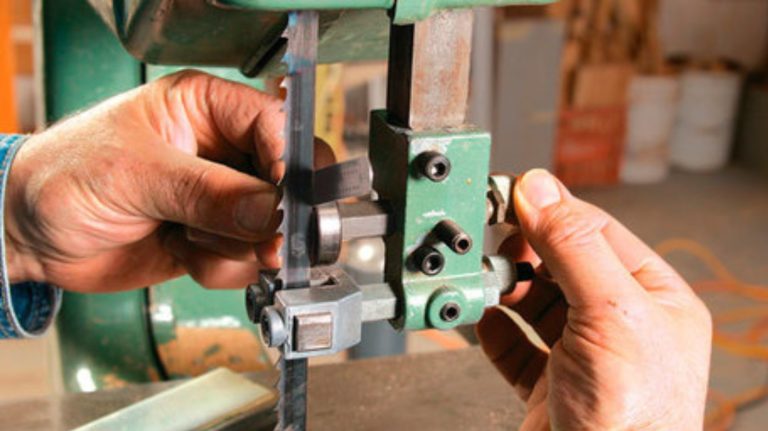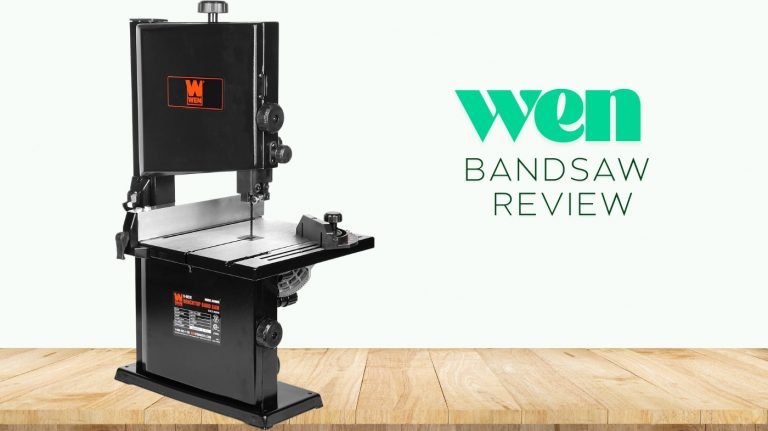Why Does My Bandsaw Blade Dull So Quick: 9 Reasons
Efficient and precise cutting operations on a bandsaw rely heavily on the condition and longevity of the bandsaw blade. However, according to my research, bandsaw blades often face challenges that result in quick dulling, impacting the overall efficiency of the cutting process.
One of the most common reasons for bandsaw blade dulling is improper blade tension. Using the wrong type of blade for the job can also cause dulling. Incorrect cutting speed, feed rate, and improper blade tension can all contribute to premature blade dulling.
Here, I will discuss the top 9 reasons why your bandsaw blade may be dulling so quickly and provide tips on extending its lifespan. Let’s explore some possible explanations and see if you can find a solution to keep your bandsaw blade cutting smoothly for longer.
Why Does My Bandsaw Blade Dull So Quick: Reasons and Solutions
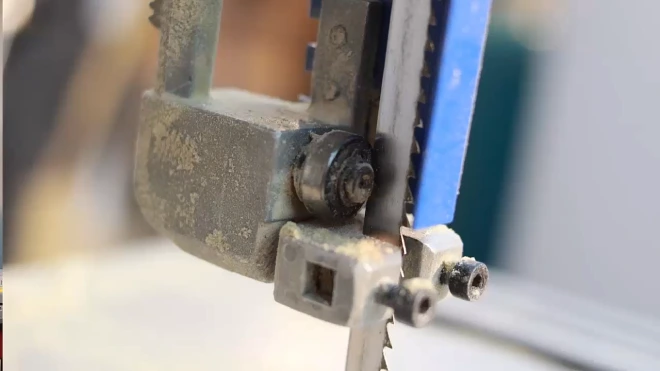
As per my findings, wood-cutting band saw blades have a lifespan of 2 to 4 hours for continuous use, depending on the wood type and cutting conditions. Here are the most common reasons for quick blade dulling and how to prevent them:
- Inappropriate cutting speed
- Unbalanced feed rate
- Improper blade tensioning
- Neglected blade maintenance
- Material-related challenges
- Incorrect tooth configuration or tpi
- Blade quality and size mismatch
- Inadequate lubrication
- Challenges of hardened teeth
Inappropriate Cutting Speed
Operating your woodworking bandsaw at an inappropriate cutting speed is a primary cause for the rapid dulling of the bandsaw blade. Excessive heat is generated when the blade speed is too high, leading to accelerated wear.
On the other hand, if the speed is too low, there’s increased friction between the blade and the material being cut, resulting in dulling.
To prevent premature dulling of the blade, I recommend speeding up your wood-cutting bandsaw to five thousand feet per minute.
Unbalanced Feed Rate
To prevent the rapid dulling of your woodworking bandsaw blade, it’s essential to maintain a balanced feed rate. This feed rate should align with the specifications of your bandsaw and the type of material you’re cutting.
An unbalanced feed rate, whether too fast or too slow, can significantly contribute to the accelerated wear of the blade. Inadequate feeding places excessive strain on the teeth, leading to premature dullness.
Achieving a balanced feed rate ensures smooth cuts without undue stress on the blade. Operators must be mindful of maintaining a feed rate appropriate for their bandsaw’s specifications and the type of material being processed.
Improper Blade Tensioning
Blade tension plays a crucial role in blade longevity, and if the tension is too high or too low, it can lead to premature dulling. To maintain optimal blade tension and prevent unnecessary wear, consult your bandsaw’s manual for the recommended tension settings and use a tension gauge for adjustment.
Measure the deflection of your blade, aiming for about 1/4′ of deflection.
For carbon steel-toothed blades, the recommended tension is typically between 15,000 to 25,000 PSI, while slitting type blades are tensioned in the 12,000 to 20,000 PSI range.
It’s important to note that bandsaw blades should never be tensioned past 35,000 PSI. Proper blade tensioning is crucial in prolonging the life of your woodworking bandsaw blade.
Neglected Blade Maintenance
Regular cleaning is essential to prevent the buildup of pitch, resin, and debris on the blade’s teeth and surfaces.
If you fail to conduct routine maintenance, you increase friction during cutting, leading to accelerated wear. By ensuring regular cleaning, you can enhance cutting efficiency and extend the overall lifespan of your bandsaw blade.
Cleaning the blade regularly with a brush or specialized cleaning solution removes any buildup that can negatively impact cutting performance. Taking the time to maintain your woodworking bandsaw blade properly will result in longer-lasting, more efficient cutting.
Material-related Challenges
When considering the quick dulling of your woodworking bandsaw blade, it’s important to understand that material-related challenges can play a significant role in this issue. Materials containing knots, resin pockets, or foreign objects can pose challenges to blade integrity. These defects can cause the blade to encounter resistance and create excessive heat, leading to premature dulling.
To mitigate the impact of material defects on blade wear, it’s crucial to carefully inspect the material before cutting and select an appropriate blade for the job. Understanding the characteristics of the material and choosing the right blade type helps minimize premature dulling.
Incorrect Tooth Configuration or TPI
Choosing the wrong tooth pitch can lead to inefficient cutting, excess friction, and premature wear. Different materials have varying hardness and thickness, requiring specific tooth configurations for optimal performance.
Using a blade with an improper tooth pitch can result in a lack of cutting efficiency, causing the blade to wear out quickly.
To prevent this, matching the tooth pitch to the material being cut is crucial. A coarser tooth pitch is recommended for softer materials, while harder materials require a finer tooth pitch. I recommend choosing a bandsaw blade with 3 TPI for softer materials and 5/6 TPI for harder materials.
Blade Quality and Size Mismatch
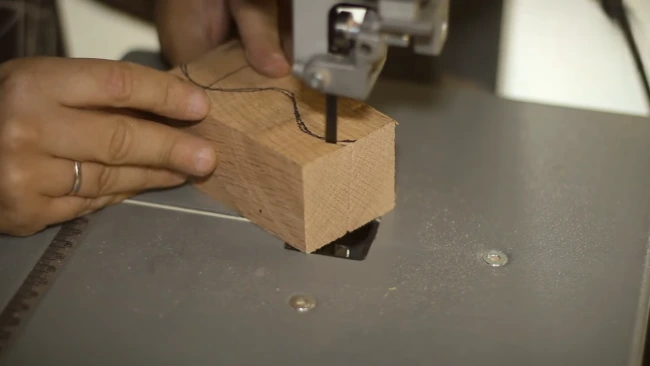
Using low-quality blades or selecting the wrong size for your woodworking bandsaw can significantly contribute to the quick dulling of your blade. Investing in bandsaw blades of inferior quality can lead to a shorter lifespan as they’re more prone to dulling quickly.
These low-quality blades may not have the necessary hardness or durability to withstand the demands of woodworking applications.
Additionally, using a blade that’s either too small or too large for the job can result in uneven wear and premature deterioration. Blades that are too small may struggle to cut through the material effectively, causing excessive friction and heat buildup, leading to faster dulling.
On the other hand, blades that are too large may experience unnecessary strain, resulting in accelerated wear.
To ensure optimal performance and longevity, choose high-quality bandsaw blades that are the correct size for your woodworking bandsaw.
Inadequate Lubrication
Lubrication is crucial in reducing friction and heat buildup during the cutting process. The blade is subjected to increased friction without proper lubrication, resulting in excessive wear and dullness.
The bandsaw must be lubricated to prevent this. Regularly check the coolant flow and levels to ensure optimal lubrication. Neglecting to do so can lead to accelerated wear and shorter blade lifespan.
Challenges of Hardened Teeth
Many bandsaw blades are equipped with hardened teeth to enhance durability. However, this hardness also presents difficulties when it comes to sharpening.
Unlike conventional blades that can be sharpened with a file, blades with hardened teeth require alternative methods. One effective method is using a diamond paddle to create a micro bevel on the back of each tooth. This process allows for the restoration of the blade’s sharpness.
It’s crucial to address the challenge of hardened teeth and utilize appropriate sharpening techniques to maintain the blade’s performance and longevity. Failure to do so can result in a blade that quickly loses its sharpness and efficiency.
How can I determine if my bandsaw blade is dull?
You can determine if your bandsaw blade is dull by visually examining it, using magnification or macro photography, and checking for unusual noises, inconsistent cutting, or burning smells during operation. Visual examination is the simplest method to assess blade condition.
Look for signs of wear, such as chipped or missing teeth or a dull and worn appearance. I recommend using magnification or macro photography to reveal more subtle signs of dullness, such as tiny nicks or blunting of the blade’s cutting edge.
Is it normal for bandsaw blades to dull suddenly?
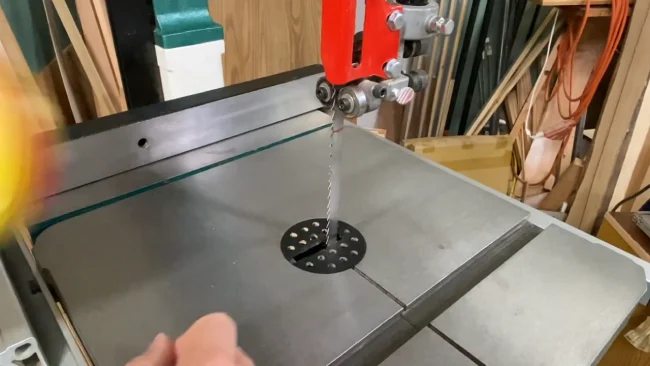
When it comes to bandsaw blades getting dull suddenly, you must understand that blades can lose sharpness suddenly, resulting in a drift during cutting. As I know, this sudden dullness can be caused by various factors, including the type of material being cut, the blade’s condition, and the cutting techniques employed.
How many times can you sharpen a bandsaw blade?
As far as I am aware, sharpening a bandsaw blade can typically be done two to three times before it needs to be replaced. When a bandsaw blade becomes dull, it doesn’t necessarily mean it’s time to throw it away. Sharpening the blade can extend its lifespan, saving you money in the long run.
Before sharpening a bandsaw blade, it’s important to assess its condition. If the blade is severely damaged or has missing teeth, sharpening may not be effective, and it may be better to replace it. However, if the blade only needs a touch-up, sharpening can restore its cutting performance.
Understand the Art of Bandsaw Blade Longevity
I believe operational practices, maintenance routines, and materials determine bandsaw blade longevity and performance. Bandsaw operators can reduce premature dulling by meticulously considering factors like cutting speed, feed rate, blade tension, and blade quality.
Regular maintenance, proper lubrication, and a keen understanding of material characteristics further prolong the bandsaw blades’ lifespan. Adopting these preventive measures and troubleshooting techniques ensures your bandsaw blades operate at peak performance.
Embrace the sharpening process as a reminder of the ongoing pursuit of mastery in your craft.

